In the realm of hearty comfort food, few dishes hold as much appeal as the beloved Dutch classic: Stamppot. In this blog post, we’ll take a journey into the rich history, tantalizing flavor profile, and cultural significance of this iconic dish, along with a tantalizing recipe to try at home.
As many of our wonderful readers are aware, my significant other Craig hails from Dutch/French heritage, and his family holds a special place in my heart. Theo, his father, generously shared this recipe with me and encouraged me to make it my own. Taking his advice to heart, I couldn’t resist adding an abundance of fresh vegetables, resulting in a deeply satisfying dish.
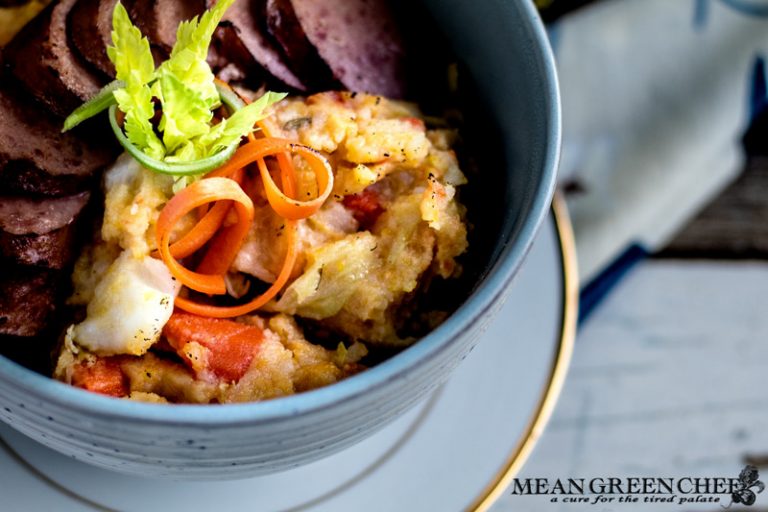
carte du jour
ToggleA Brief History of Stamppot
Stamppot has deep roots in Dutch culinary tradition, dating back centuries to a time when resourcefulness and simplicity were prized in the kitchen. Originally born out of necessity, this humble dish was created as a way to stretch limited ingredients to feed hungry families. Its name, “Stamppot,” literally translates to “mashed pot,” reflecting its simple preparation method of boiling and mashing ingredients together in a single pot. Said to have originated after the Spanish soldiers fled, leaving behind stew that the starving Dutch welcomed after the “Eighty Years War”.

Stamppot Flavor Profile
At its core, Stamppot is a comforting medley of mashed potatoes and vegetables, typically including ingredients like kale, spinach, carrots, onions, or sauerkraut. The result is a hearty and satisfying dish with a rich, earthy flavor and creamy texture. The addition of smoked sausage or bacon lends a savory depth to the dish, while a generous dollop of butter adds a touch of indulgence.
Get creative and add vegetables that you may have in your fridge already. Our recipe is a guideline and yields a delicious result, but you can easily adjust to use what you have on hand.
Cultural Significance
Beyond its culinary appeal, Stamppot holds a special place in Dutch culture as a beloved comfort food that brings families together. Traditionally enjoyed during the colder months, it provides warmth and nourishment during long winter days. Its simplicity and versatility also make it a popular choice for gatherings and celebrations, where it can be customized to suit individual tastes and preferences.
Suggestions for Crafting Stamppot
- Cut all vegetables into uniform size for even cooking.
- Choose high-quality ingredients for the best flavor.
- Don’t overcook the vegetables to maintain their texture and flavor.
- Experiment with different vegetable combinations to find your favorite flavor profile.
- Add a flavorful stock, such as Ham Hock Stock, (pictured, below) to enhance the taste of the mash.
- Don’t be afraid to customize the recipe to suit your preferences.
- Garnish with fresh herbs or crispy fried onions for extra flavor and texture.
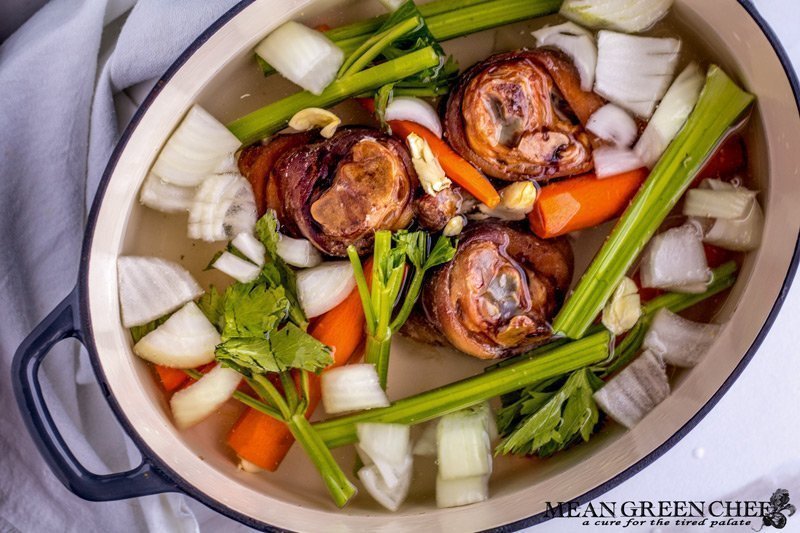
Preserving Dutch Comfort: Storing Stammpot for Freshness and Flavor
Stammpot, a traditional Dutch dish featuring mashed potatoes combined with vegetables and sometimes meat, can be stored to maintain its quality. Here’s how:
Cooling: Allow the stammpot to cool completely before storing it. This prevents condensation from forming inside the storage container, which can make the dish soggy.
Airtight Container: Transfer the cooled stammpot to an airtight container. Choose a container that is suitable for both storing and reheating the dish. Glass or plastic containers with tight-fitting lids work well.
Refrigeration: Store the stammpot in the refrigerator if you plan to consume it within a few days. Proper refrigeration helps to slow down the growth of bacteria and maintain the freshness of the dish. Stammpot can typically be stored in the refrigerator for up to 3-4 days.
Freezing (Optional): For longer-term storage, stammpot can be frozen. Divide the dish into individual portions or larger batches, depending on your preference. Place the stammpot in freezer-safe containers or resealable bags, removing as much air as possible before sealing. Frozen stammpot can maintain its quality for several months.
Shelf Life: When stored properly in the refrigerator, stammpot can last for up to 3-4 days. If frozen, it can maintain its quality for several months. However, for the best flavor and texture, it’s recommended to consume stammpot within a reasonable timeframe.
By following these storage tips, you can enjoy the comforting flavors of Stammpot for longer periods, whether you’re savoring it fresh or reheating it from the freezer.
Pin to Make & Share!📌

How to Make Dutch Stamppot

Dutch Stamppot with Smoked Sausage
Ingredients
- 2 lbs (900 grams) Idaho potatoes, peeled + diced
- 1 lb (500 grams) Butternut squash, peeled + diced
- 1/2 lb (250 grams) sweet potatoes, peeled + diced
- 3 large carrots, peeled + diced
- 2 large parsnips, peeled + diced
- 1 large turnip, peeled + diced
- 1 large white onion, peeled + diced
- 2 large leeks, cleaned + diced
- 1 lb (450 grams) kale or green cabbage, chopped
- 32 oz (960 ml) Ham Hock Stock, veg stock or water
- 1/2 cup (120 grams) butter, optional
- Kosher sea salt + freshly cracked black pepper, to taste
- 1 1/2 lbs (680 grams) smoked sausage
Instructions
- Peel and coarsely chop the potatoes, Butternut squash, sweet potatoes, carrots, parsnips, turnip, and onion. Wash the leeks and cabbage to remove any debris, then chop.

- Toss all into a large heavy-bottomed stock pot and then pour in the Ham Hock Stock, add water if need to bring the level up to barely cover the vegetables. Bring to a boil over medium-high heat, then reduce the heat and allow to simmer partially covered till vegetables are tender. About 20 minutes.

- Meanwhile, cook the smoked sausage until browned and cooked through.

- Drain the vegetables well, then mash, with the butter. Season with salt and pepper.

- Serve with sliced smoked sausage and a knob of butter if desired.

Notes
- Prep time is approximate.
- Leftovers can be refrigerated in an airtight container up to 3 days.
- Freeze in an airtight container up to 6 months, freeze in individual portions.
Creative Recipe Inspiration
Ham Hock Stock, is a rich and flavorful base perfect for enhancing soups, stews, and sauces. Made with tender ham hocks, aromatic veggies, and fragrant herbs, this stock adds depth and complexity.
Texas Pinto Beans – a hearty and flavorful dish that’s a staple of Texan cuisine. Slow-cooked with savory bacon, aromatic spices, and a touch of smoky chipotle, these beans are simmered to perfection for a rich and satisfying meal.
Step Into My Kitchen!
Hey there, fellow food enthusiast! Welcome to Mean Green Chef, where every dish tells a story and every recipe is a labor of love. I’m thrilled to share a bit about myself and the journey that led me here, stirring pots and sprinkling spices for over three decades!


Just a quick heads up – you might notice some affiliate links sprinkled throughout our site. If you decide to click on them and make a purchase, rest assured, it won’t cost you extra. Instead, you’ll be helping to support our blog and keep the kitchen fires burning. Thanks a bunch for your support!



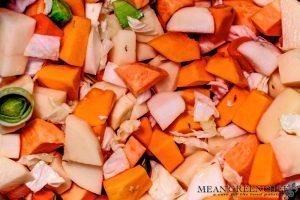
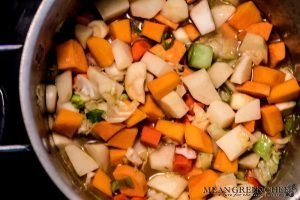



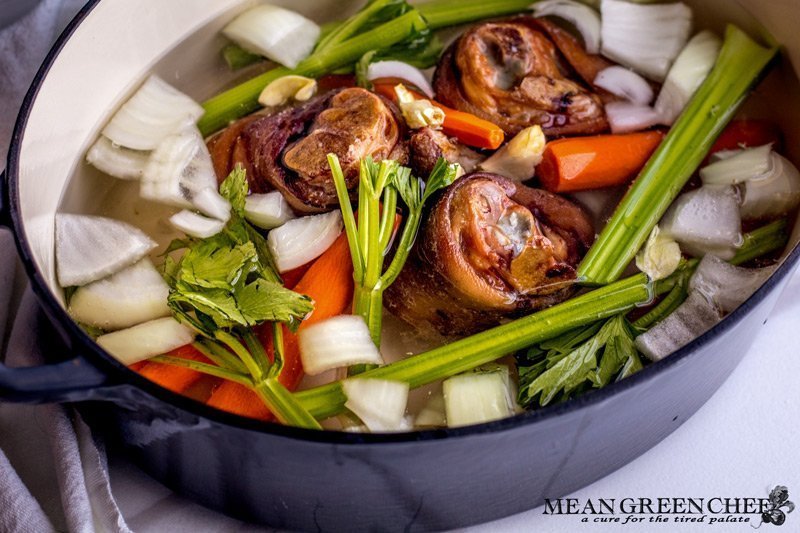
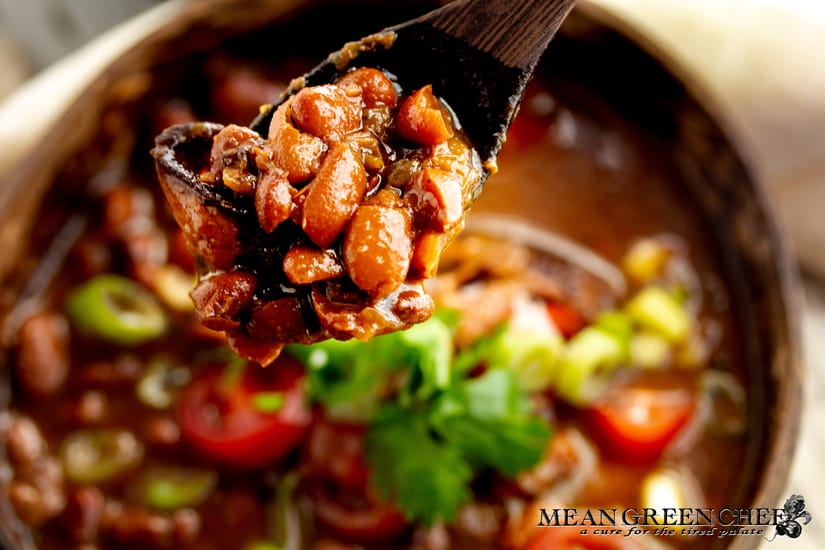



This dish sounds great! I love all the vegetables in it.
Any root veg you have on hand goes great in Dutch Stamppot, thanks so much, Erika! 🙂
Hi Angela,
This Dutch Stamppot looks like a dish I’d really enjoy. Directions indicate veggies are mashed once cooked. How much are they mashed…..lightly? From the above picture, it seems the veggies have retained their texture.
Thanks.
Hi, Diane, just mash the veg to your desired consistency and enjoy! Thank you!